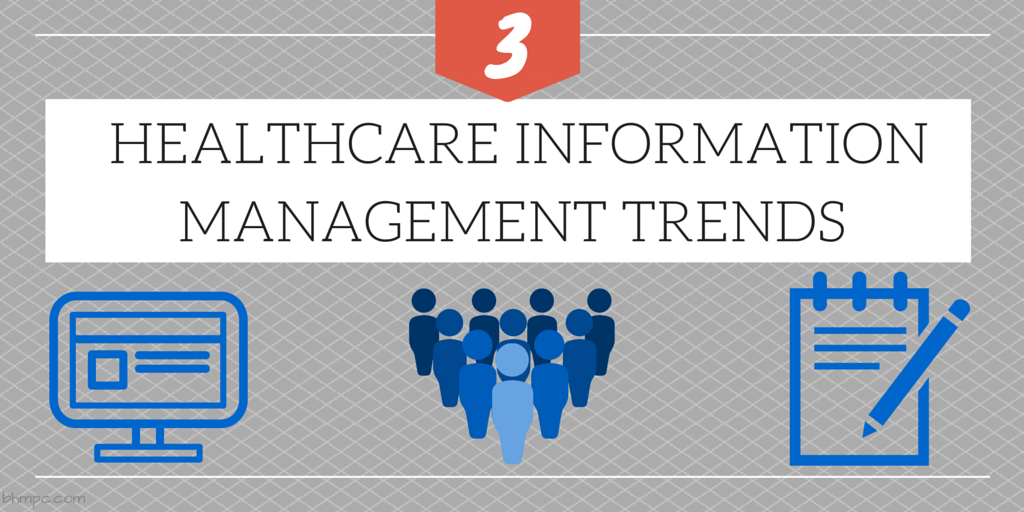The healthcare industry is rapidly growing: With innovations in medical tools and new successful procedures performed annually, there is no shortage of change. Just as vital to the industry are solutions that help manage the information of the millions of patients who visit each year. To keep up with the demand and to facilitate the process, adjusting healthcare information management practices is a necessity. Here are three trends that are being implemented.
1. Electronic Health Records
In an effort to better facilitate communication among medical professionals and allow access to the entirety of a patient’s care, healthcare providers are using electronic health records (EHRs) instead of electronic medical records (EMRs). The two are similar in that they both provide patient records, but unlike EHRs, EMRs are bound to a single location. Therefore a doctor only has the information they collect on a patient; if the information is requested by another facility, the record still needs to be printed and faxed over. With electronic health records, all of a patient’s medical information is available. Several other benefits exist in implementing EHRs, including:
- Better targeted treatments
- Increasing time spent with patients
- Reducing administrative costs
- Helping prevent complications from treatments.
2. Standardization
Because healthcare information management is shifting to allow multiple approved parties to access patient records, standard procedures need to be implemented. Without standards, several versions of a code or varying terminology could render the file confusing to understand. For example, the International Classification of Diseases was revised for the tenth time, and healthcare providers and insurance providers were required to switch to ICD-10 on October 1, 2015. But because the switch was only required for inpatients—and not for worker’s compensation or disability—many facilities can still use the ICD-9 codes. Therefore medical providers have to juggle two sets of codes.
The lack of standardization among all facilities that need to utilize these codes takes time away from treating patients and increases the chance of errors, from patient treatment to receiving payment. Standardization minimizes risk, saves time and money, and reduces difficulty in updating patient records.
3. Patient Participation
With the Affordable Care Act, there is a secondary push for Americans to become more involved with their health and healthcare. More providers are offering options for patient portals to access their personal health records. They can see an overview of their treatment and make better-informed decisions. Some of these patient portals facilitate patient and physician communication by allowing for communication via email. The nature of email allows a patient to ask their question without spending time waiting on the phone, and the physician can respond at a designated time instead of being pulled away from patients.
These three trends indicate an overall shift in the way healthcare providers manage patient information. Inputting and accessing the information should be a simple action, and with the regular influx of information, any issue could result in a complication for patients.
Author Bio:
Hannah Nava loves writing about any topic, and the medical industry is no exception. She currently writes on behalf of the EHR experts at OmniMD. When not marrying words, Hannah enjoys reading science fiction, fantasy, and dystopian works; sipping margaritas (always frozen); and trying to make the world a happier place. Tweet her @hannahmnava or connect with her on LinkedIn.

